|
|
|
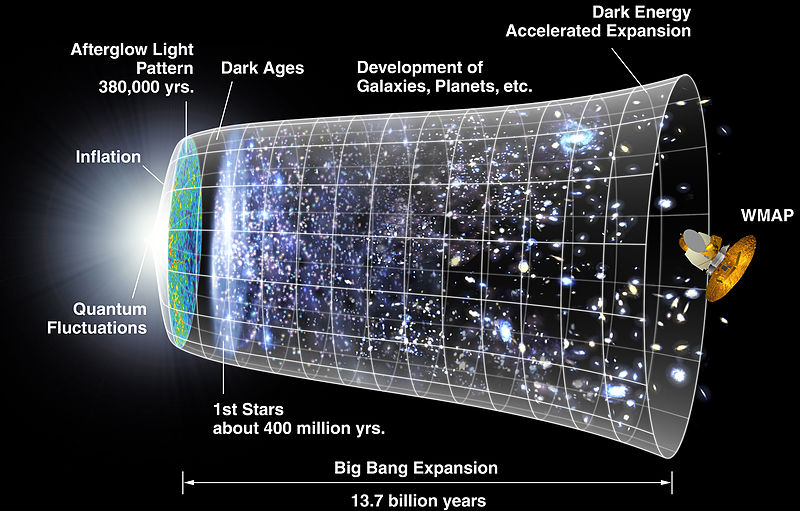
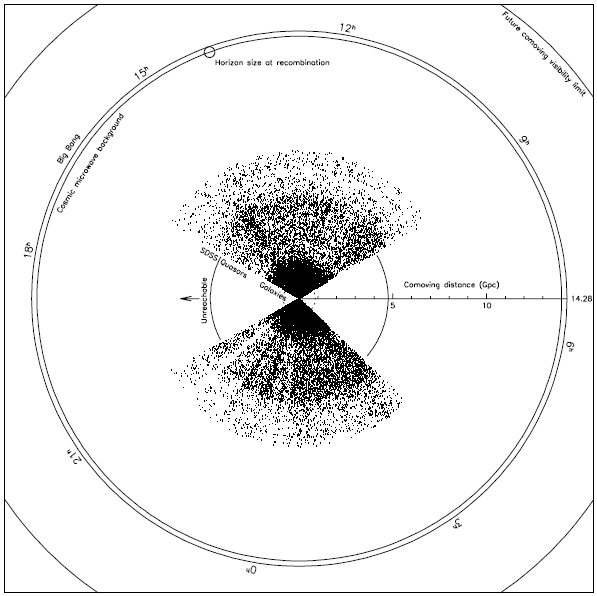
Galaxies and Quasars in the equatorial slice of the Sloan Digital Sky Survey. The maximum radius shown on the diagram defines an expanding sphere of Co-moving distance 14.28 Gpc out to the Big Bang. (Fig 1 from J. Richard Gott, M. Juric, et al.)
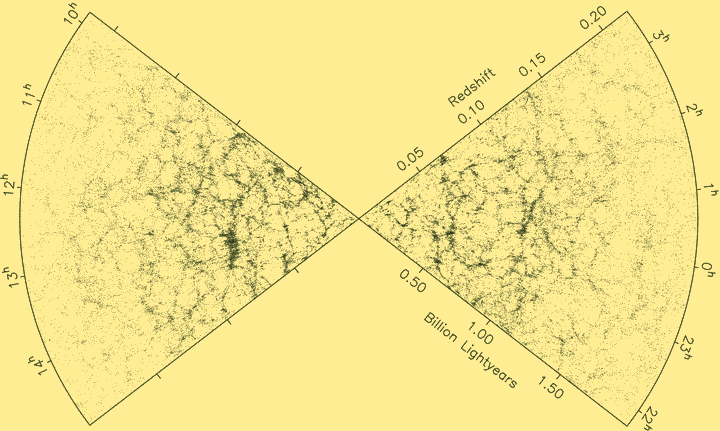
Zoom in to the central region out to 2 billion light-years or a redshift, z ~ 0.25. 2dF Galaxy Redshift Survey (AAO)
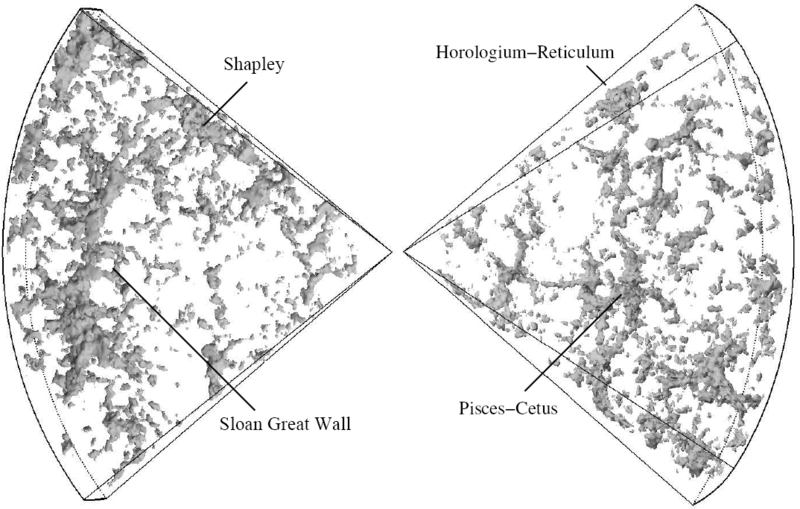
2dF Galaxy Redshift Survey showing nearby LSS filaments and voids within the volume of space covered by the survey. (2dFGRS/AAO)
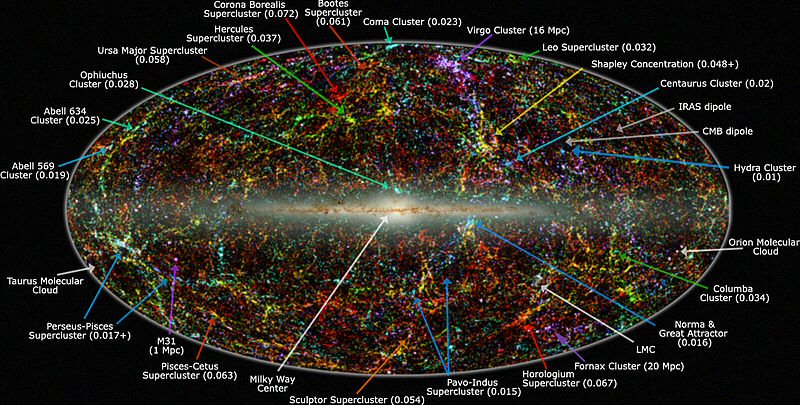
2MASS Panoramic view of the entire near-infrared sky reveals the distribution of galaxies beyond the Milky Way. The image is derived from the 2MASS Extended Source Catalog (XSC)ómore than 1.5 million galaxies, and the Point Source Catalog (PSC)--nearly 0.5 billion Milky Way stars. The galaxies are color coded by 'redshift' obtained from the UGC, CfA, Tully NBGC, LCRS, 2dF, 6dFGS, and SDSS surveys (and from various observations compiled by the NASA Extragalactic Database), or photo-metrically deduced from the K band (2.2 um). Blue are the nearest sources (z < 0.01); green are at moderate distances (0.01 < z < 0.04) and red are the most distant sources that 2MASS resolves (0.04 < z < 0.1). The map is projected with an equal area off in the Galactic system (Milky Way at center). (Source: Wikipedia)
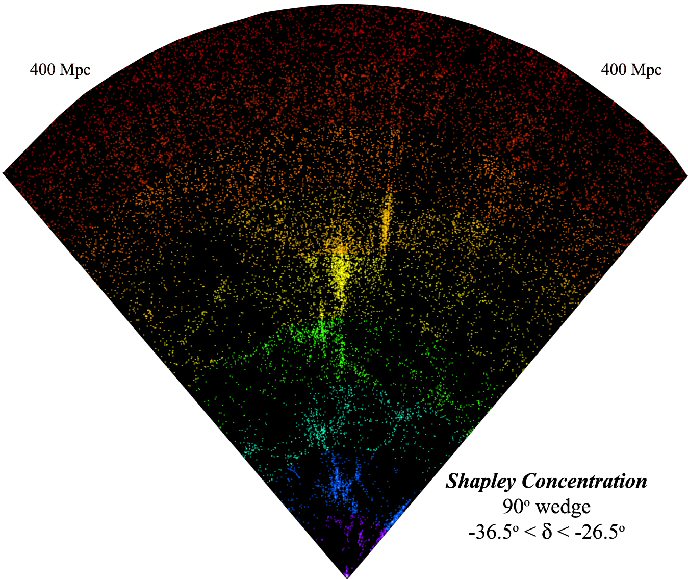
Large Scale Structure in the Local Universe: The 2MASS Galaxy Catalog
Redshift slice of the Shapley Concentration region, extending to the limit of the 2MASS galaxy catalog, z ~ 0.1 (400 Mpc). The equatorial RA slice is 90 deg between a declination boundary of -36.5 deg < Dec < -26.5 deg. The points are color-coded by redshift (see previous). The "finger of god" radial velocity artifacts trace galaxy clusters, including Abell 3558 (center, yellow). The Hydra-Cen supercluster is foreground (blue fingers) to the Shapley Concentration. (2MASS)
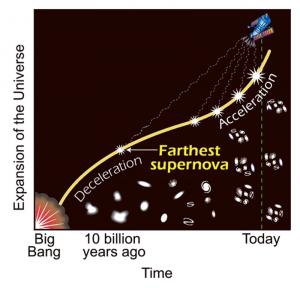
Using Type Ia supernovae in distance determination can give the expansion rate(s) of the Universe at different epochs, and its radius at those times. The Universe is starting to accelerate again as Lambda dominates slightly over matter at the present epoch. (Supernova Cosmology Project)
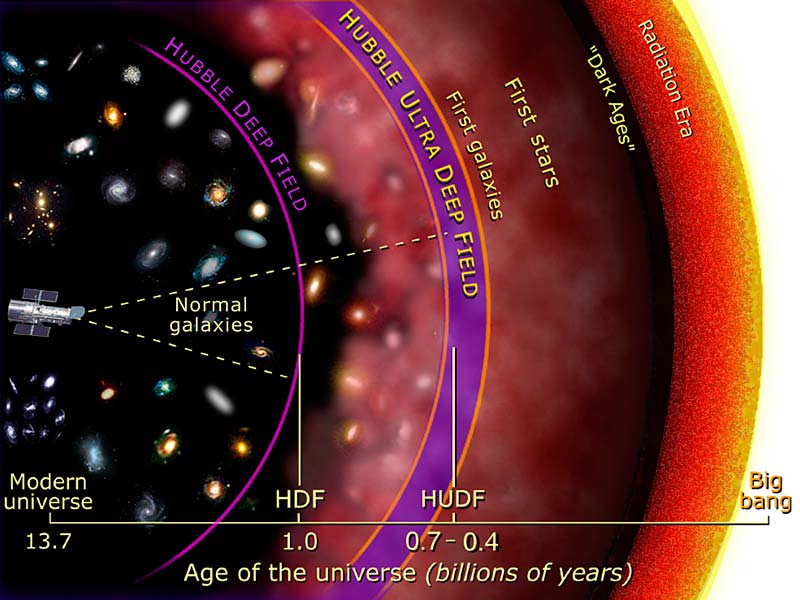
Hubble Ultra Deep Field location diagram (HST/STScI)
[ Back to Part 31 ]